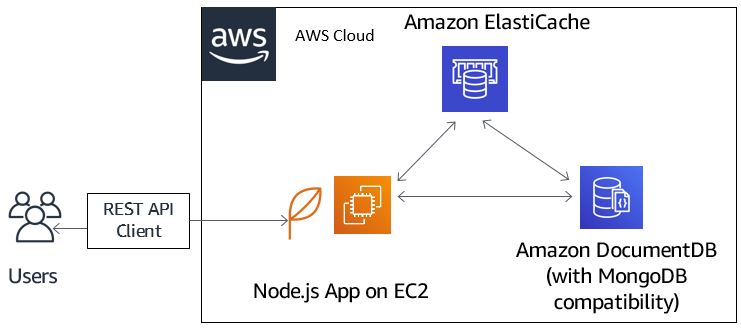AWS Database Blog
Tag: ElastiCache
Five workload characteristics to consider when right sizing Amazon ElastiCache Redis clusters
This post discusses the process to determine the right node size and cluster topology for your Amazon ElastiCache workloads, and the important factors to consider. This post assumes you have a good knowledge of Redis and its commands and have an understanding of Amazon ElastiCache for Redis and its features such as online cluster resizing, […]
Building resiliency at scale at Tinder with Amazon ElastiCache
This is a guest post from William Youngs, Software Engineer, Daniel Alkalai, Senior Software Engineer, and Jun-young Kwak, Senior Engineering Manager with Tinder. Tinder was introduced on a college campus in 2012 and is the world’s most popular app for meeting new people. It has been downloaded more than 340 million times and is available […]
Caching for performance with Amazon DocumentDB and Amazon ElastiCache
In tech, caching is ubiquitous. CPUs use L1, L2, and L3 caches, and mobile phones cache app data locally. Streaming services cache content on the edge, browsers cache images, and more. The same is true for databases. Imagine if, on a gaming site, every time a leaderboard was displayed, a query had to do a […]
How to work with Cluster Mode on Amazon ElastiCache for Redis
In this post, I will describe how you can leverage ElastiCache for Redis with cluster mode enabled to enhance reliability and availability with little change to your existing workload. Cluster Mode comes with the primary benefit of horizontal scaling up and down of your Redis cluster, with almost zero impact on the performance of the cluster, as I will demonstrate later. If you have ever encountered a Redis cluster that is over or under-provisioned or just want to better understand its inner workings, please read on.
Automated query caching into Amazon ElastiCache for Amazon RDS, Amazon Aurora and Amazon Redshift
This is a guest blog post by Erik Brandsberg, CTO at Heimdall Data, in partnership with AWS Technical Evangelist Darin Briskman. Heimdall Data is an AWS Advanced Technology partner who in their own words “offers a database proxy on the AWS Marketplace that supports SQL query caching into Amazon ElastiCache for Redis without code changes. […]
Boosting application performance and reducing costs with Amazon ElastiCache for Redis
Contributed by Senior Software Development Engineer, Shawn Wang, Software Development Engineer, Maddy Olson, and Senior Manager, Software Engineering, Itay Maoz. Amazon ElastiCache for Redis helps customers achieve extreme performance with very low latencies at cloud scale and minimal management costs. Redis’s high performance, simplicity, and support for diverse data structures have made it the most […]
Powering recommendation models using Amazon ElastiCache for Redis at Coffee Meets Bagel
Coffee Meets Bagel (CMB) is a dating application that serves potential matches to over 1.5 million users daily. Our motto is “quality over quantity” because we focus on bringing a fun, safe, and quality dating experience that results in meaningful relationships. To deliver on these promises, every match we serve has to fulfill a strict […]
Latency reduction of hybrid architectures with Amazon ElastiCache
A challenge that some organizations face when moving to the cloud is how best to migrate or integrate old legacy infrastructure with restrictive licensing to an environment that offers a breadth of functionality and pay-as-you-go pricing. AWS provides many options to help customers in their analysis and planning. One common approach is to establish a […]
Managing Amazon ElastiCache with Terraform
Nic Jackson is Developer Advocate at HashiCorp. Developers continue to pick Redis as their favorite NoSQL data store (see the Stack Overflow Developer Survey 2017). Amazon ElastiCache provides easy, fast, and highly available Redis on AWS. ElastiCache for Redis can be deployed via the AWS Management Console, AWS SDK, Amazon ElastiCache API, AWS CloudFormation, and […]
How to Build a Chat Application with Amazon ElastiCache for Redis
Sam Dengler is a Solutions Architect at Amazon Web Services In this blog post, we review concepts and architectural patterns relevant to a chat application. We also discuss implementation details for a chat client and server, and instructions to deploy a sample chat application into your AWS account. Background information Building a chat application requires […]









